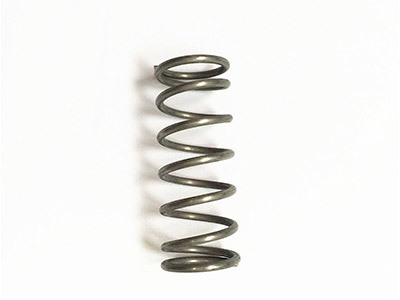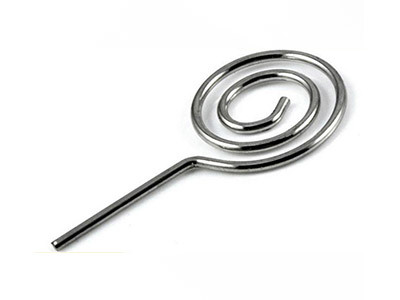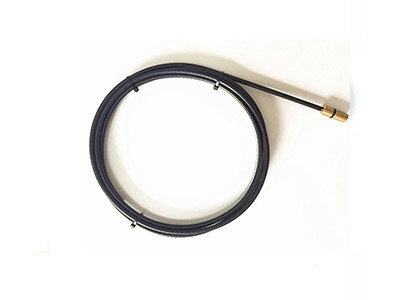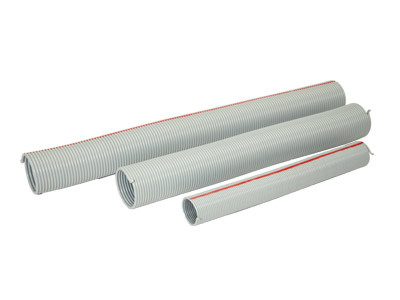Top 10 Applications for Quality Compression Springs You Should Know
Release Time:
2025-05-11
Top 10 Applications for Quality Compression Springs You Should Know Compression springs are an integral component in a variety of applications across numerous industries. Their ability to store and release energy makes them indispensable in mechanisms that require controlled motion. In this article, we will explore the **top 10 applications of quality compression springs** that you should be awa

Top 10 Applications for Quality Compression Springs You Should Know
Compression springs are an integral component in a variety of applications across numerous industries. Their ability to store and release energy makes them indispensable in mechanisms that require controlled motion. In this article, we will explore the **top 10 applications of quality compression springs** that you should be aware of, highlighting the versatility and critical role they play in modern technology.
1. Automotive Industry: Enhancing Performance and Safety
Compression springs are widely utilized in the automotive industry, contributing to various functions that enhance both performance and safety. They can be found in suspensions to absorb shocks, in brake systems to provide consistent pressure, and in engines where they ensure optimal valve operation. Quality compression springs ensure reliability and durability in demanding automotive environments, ultimately improving vehicle performance and longevity.
1.1 Suspension Systems
In suspension systems, compression springs absorb the impact from road irregularities, providing a smoother ride. They help maintain vehicle stability and control, ensuring that the vehicle responds effectively during acceleration, braking, and cornering.
1.2 Brake Systems
In brake systems, compression springs are essential for automatic return mechanisms. They ensure that brake pads retract correctly after being applied, preventing drag and enhancing the vehicle’s fuel efficiency.
2. Aerospace Applications: Meeting Strict Standards
The aerospace industry demands components that meet stringent safety and performance guidelines. Compression springs are critical in various aerospace applications, including landing gear systems and control surfaces.
2.1 Landing Gear Mechanisms
In landing gear systems, compression springs contribute to the shock-absorbing mechanisms that protect the aircraft during landing. Their ability to withstand extreme conditions while maintaining reliability is crucial for flight safety.
2.2 Control Surfaces
Control surfaces such as ailerons and flaps rely on compression springs for controlled movement and responsiveness. These springs maintain the necessary tension, ensuring that pilots can effectively maneuver the aircraft.
3. Medical Devices: Precision and Reliability
In the medical field, precision is paramount. Compression springs are utilized in various medical devices, including syringes, dental tools, and hospital beds, ensuring functionality and reliability in critical applications.
3.1 Syringes and Injectors
Compression springs provide the necessary force in syringes and injectors, ensuring accurate dosing and reliable operation. Their responsiveness is vital for patient safety and effective treatment.
3.2 Hospital Bed Mechanisms
In hospital beds, compression springs facilitate movement and adjustment, allowing for patient comfort and accessibility. The springs must provide consistent performance to support patients' needs efficiently.
4. Consumer Electronics: Compact Design and Functionality
Compression springs play a significant role in the design and functionality of consumer electronics, from smartphones to home appliances. Their compact design allows for effective solutions in tight spaces.
4.1 Mobile Devices
In mobile devices, compression springs are found in keyboards and buttons, offering tactile feedback for user satisfaction. They ensure durability, enhancing the user experience without compromising on design.
4.2 Home Appliances
Electrical appliances use compression springs in various applications, such as door mechanisms and latches, ensuring reliable operation and longevity of the product.
5. Industrial Equipment: Enhancing Productivity
The industrial sector heavily relies on compression springs for machinery and equipment, helping to increase efficiency and productivity.
5.1 Conveyor Systems
In conveyor systems, compression springs are used to maintain tension in belts and chains, ensuring smooth operation and reducing wear on components. Their role is crucial in high-volume production environments.
5.2 Automated Machinery
Compression springs provide the necessary force in automated machinery, enhancing speed and accuracy in manufacturing processes. Their reliability contributes to overall equipment efficiency.
6. Furniture and Home Décor: Stability and Style
Compression springs are also widely used in the furniture industry, contributing to comfort and functionality in various products.
6.1 Upholstered Furniture
In upholstered furniture, compression springs enhance comfort by providing support and flexibility. They allow for the durability of the seating while maintaining a stylish appearance.
6.2 Adjustable Furniture
Compression springs in adjustable furniture, such as recliners and office chairs, allow for easy adjustment and comfortable seating positions, promoting ergonomic benefits.
7. Sporting Goods: Performance Enhancement
In the sporting goods industry, compression springs are utilized to enhance the performance of various equipment.
7.1 Exercise Machines
Compression springs in exercise machines provide resistance, allowing users to customize their workouts effectively. They contribute to the machine's durability while ensuring a smooth user experience.
7.2 Sporting Equipment
In sports equipment like tennis rackets and golf clubs, compression springs offer enhanced power and control, improving user performance on the field or court.
8. Robotics: Facilitating Movement and Control
In robotics, compression springs play a vital role in creating efficient movement and control mechanisms.
8.1 Actuator Systems
Compression springs are often used in actuator systems within robots, providing the necessary force for movement and functionality. Their reliability is critical for the success of robotic applications.
8.2 Gripping Mechanisms
In robotic gripping mechanisms, compression springs allow for a secure yet flexible grip on objects, enabling robots to perform tasks with precision and efficiency.
9. Agriculture: Supporting Innovation in Farming Equipment
The agricultural sector benefits significantly from compression springs in various farming equipment, improving productivity and efficiency.
9.1 Planting Equipment
In planting equipment, compression springs assist in mechanisms that ensure accurate seed placement, vital for crop yields. Their reliability impacts the efficiency of farming operations.
9.2 Harvesting Machines
Compression springs in harvesting machines facilitate smooth operation, ensuring that components move harmoniously during harvesting processes, reducing downtime.
10. HVAC Systems: Efficiency and Performance
In heating, ventilation, and air conditioning (HVAC) systems, compression springs are used to maintain efficiency and performance.
10.1 Air Filters
Compression springs help maintain tension in air filters, ensuring that they fit securely and operate effectively, improving overall air quality.
10.2 Dampers
In HVAC dampers, compression springs control airflow, allowing for efficient temperature regulation within buildings and enhancing energy savings.
Conclusion: The Versatile Role of Compression Springs
Quality compression springs play a pivotal role across numerous industries, underlining their versatility and importance in modern applications. From automotive and aerospace to consumer electronics and agriculture, these springs contribute to performance, efficiency, and reliability. Understanding the diverse applications of compression springs can help businesses optimize their operations and improve product performance. Investing in high-quality compression springs ensures that your projects can meet the demands of today's fast-paced industrial landscape.
FAQs
1. What are compression springs made of?
Compression springs are typically made from high-carbon steel, stainless steel, or other alloys that provide strength and durability. The choice of material depends on the specific application and environmental conditions.
2. How do compression springs work?
Compression springs work by storing mechanical energy when compressed. When the force is removed, the spring returns to its original shape, releasing the stored energy, which can be used for various applications.
3. What factors should be considered when selecting a compression spring?
When selecting a compression spring, consider factors such as load requirements, space constraints, environmental conditions, and material properties to ensure optimal performance.
4. Can compression springs be customized for specific applications?
Yes, compression springs can be customized in terms of dimensions, materials, and design to meet specific application needs, enhancing their effectiveness in various environments.
5. What industries benefit the most from compression springs?
Several industries benefit from compression springs, including automotive, aerospace, medical devices, consumer electronics, industrial equipment, furniture, sporting goods, robotics, agriculture, and HVAC systems.
Related News







